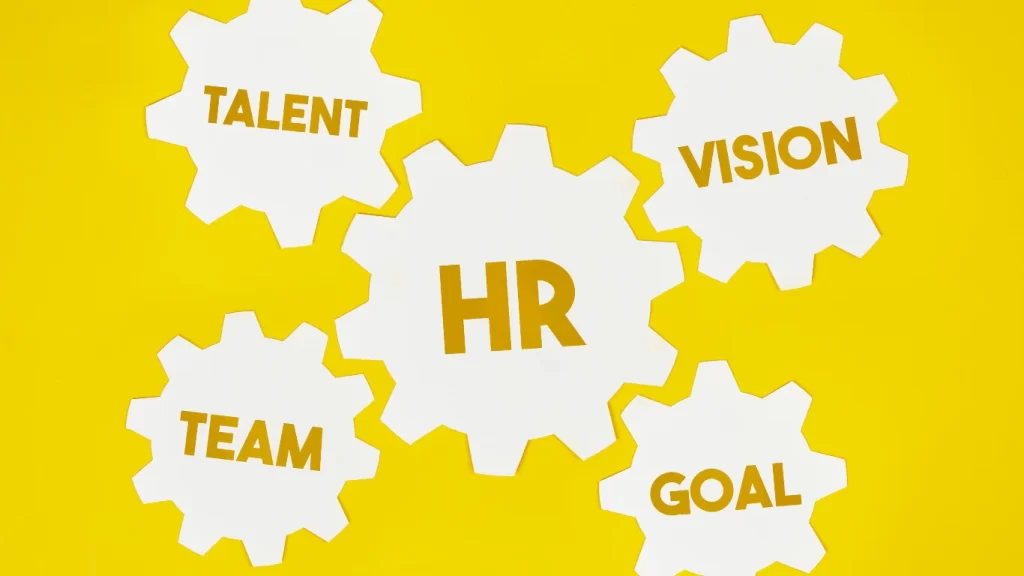As firms adapt to a changing business environment, having an efficient HR solution is crucial. This blog guides you on creating your ideal HR system.
We will begin by discussing how to determine your specific HR needs, such as workforce size, industry, and regulatory requirements. We will then examine essential elements of HR systems, including tools for evaluating performance, payroll processing, and employee data management.
In this article, we will teach you how to build a perfect HR solution, discussing the benefits of modern HR technology, including cloud-based platforms and AI-powered hiring tools. We will also guide budget allocation, vendor selection, and in-house solution development. We aim to help you create a customized HR solution that enhances employee satisfaction, simplifies processes, and contributes to the long-term success of your organization. By the end of this blog, you will have a well-defined plan for implementing an effective HR system.
What is an HR Solution?

An HR solution or Human Resources software is a comprehensive technological platform designed to streamline various HR activities in a business. It includes a range of tools and capabilities to manage essential HR tasks such as hiring, onboarding, payroll, benefits management, performance evaluation, and workforce analytics.
HR solutions are designed to enhance productivity, improve the accuracy of data, and empower HR managers to make informed decisions on employee engagement, talent management, and compliance with labour laws. These solutions can be customized to meet the specific needs of a company, resulting in more streamlined HR processes.
How To Build A Perfect HR Solution For Your Needs?
Now, the time has come for you to effectively create a flawless HR solution personalized to your organization’s needs. We’ll build a guide of a 7-step procedure that will help you from the start to the end of building HRM software solutions.
Step 1: Establish Your Goals
Before beginning to develop your HR solution, it is crucial to establish your goals. This is the first stage in building an effective HR system. You need to identify the particular problems your company is facing and what you want to achieve with your HR system.
Once you have a clear understanding of your goals, you can create a set of plans that will guide the development of your solution. Whether you want to improve performance management, streamline employee onboarding, or facilitate recruitment, having a well-defined set of goals will help you build an HR system that meets your company’s specific needs.
Step 2: Perform a Needs Analysis
Once you have established your HR goals, it is essential to conduct a comprehensive needs analysis. This involves engaging key stakeholders, such as HR professionals, managers, and employees, to identify issues and gather requirements. It is crucial to review your current HR processes and systems to identify areas that can be automated or improved. However, the critical foundation for developing your HR solution will be this assessment.
Step 3: Select the Right Technology
In order to create a successful HR solution, it’s crucial to choose the right technological stack. One of the most important considerations is whether you want your HR software to be hosted on-premises or in the cloud.
Nowadays, there are many HR management system software providers and platforms available that are focused on scalability, customization options, and integration capabilities. It’s essential to make sure that the technology you choose is compatible with your company’s IT infrastructure and meets your security requirements.
Step 4: Design a User-Centric Interface
When creating an HR solution, it is crucial to prioritize user experience. This can be achieved by designing an intuitive and user-friendly interface that is suitable for managers, employees, and HR specialists. It is also essential to ensure that the design is responsive and functions effectively across all platforms.
Moreover, accessibility is another crucial aspect that should not be overlooked. The system should allow easy access to training materials, enable the submission of leave requests, and provide the ability to complete performance reviews without any difficulty.
Step 5: Customize and Configure
Design a custom HR solution that caters to the specific needs of your organization. You can adjust workflows, forms, and data fields to align with your HR policies. Establish access rules based on roles to ensure data privacy. It is crucial to integrate the HR system with current benefits, time tracking, and payroll management systems. Additionally, a scalable HR solution will enable future customization as your organization expands and evolves.
Step 6: Implement and Train
It is crucial to ensure that the system is adopted and executed successfully. To achieve this, it is essential to create a comprehensive implementation plan that includes system testing, data migration, and a rollout strategy. To ensure that HR professionals, supervisors, and employees can make the most of the new system, provide them with complete training. In addition, it is advisable to create user guide tutorials and offer ongoing assistance to address any issues or questions that may arise during or after the deployment phase.
Step 7: Monitor, Evaluate, and Improve
It is crucial to improve your HR solution for long-term success continuously. Regularly monitor user input, system performance, and KPIs for HR processes. Gain valuable insights into employee engagement, turnover rates, and other HR data using analytics. Identify any bottlenecks or potential improvement areas and make the necessary system improvements. To stay up-to-date with HR technology, it is essential to follow market trends and software changes.
How Much Does It Cost To Build An HR Solution?

When creating a human resource management system software, it is essential to consider the cost associated with it. The cost of developing an HR solution can be influenced by several factors, including the complexity of the system, the features and functionalities required, the technology stack chosen, and whether to use pre-built software or custom development.
Generally, building a unique HR solution from scratch can be pretty expensive, with expenses ranging from $8,000 to $25,000.
1. Scope and Complexity:
Your HR solution’s complexity will impact costs. Basic systems managing employee information and payroll will be less expensive than complete solutions with performance management, recruitment, and employee self-service portals.
2. Technology Stack:
The choice of a technology stack can have an impact on prices. Open-source platforms and technologies may be less expensive than proprietary ones, but they may also require more effort during development. Cloud-based solutions demand continuing membership fees, but they can reduce infrastructure costs.
3. Customization:
Customization may be necessary to fit your unique HR demands. Development costs vary depending on customization needs, with more intricate modifications requiring more time and expertise.
4. Integration:
Integration fees can become costly if your HR solution requires integration with other programs, such as accounting software or time-tracking devices. Compatibility and data mapping are critical factors to consider.
5 User Experience and Interface:
Design and usability efforts can increase development expenses but are necessary for employee adoption of an intuitive and satisfying user interface.
6. Development Team Location:
To develop HR software, it’s essential to have an excellent custom software development services provider. This requires hiring a dedicated team of developers, which could be expensive depending on the location. The cost of the HRM software development company’s website will also play a significant role.
7. Testing and quality control:
Thorough testing and quality control are crucial to avoid any issues that might affect HR operations. However, the costs associated with testing can increase the overall expenses. For small businesses, the cost of an off-the-shelf HR software package varies from $2,000 to $10,000 per year. On the other hand, the development cost of HR management software could range from $16,000 to $25,000 or more based on the given parameters. Additionally, the annual cost of ongoing maintenance and support is usually 15% to 30% of the initial development cost.
Conclusion
The use of customized software plays a significant role in managing human resources. To get started, you should identify your specific requirements, choose the most suitable technology, and ensure that the HR solution is easy to use. You should also consider customizing the software to meet your specific needs, integrate it with other systems, prioritize security, and plan for future business expansion.
If you want to create an HR solution that simplifies work for everyone and benefits your business, it’s a good idea to hire a dedicated team of developers. We hope this guide helps put you on the right direction on how to build a perfect HR solution.





